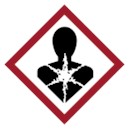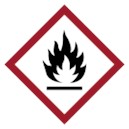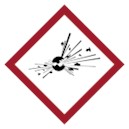Hazard Communication
Last updated on 4/19/24 | First published on 4/19/24 | Literature review current through Sep. 2025
[cite]
Authors:
Evamie Roche B.S., M.S.,
Topic editors:
Elaine Horibe Song MD, PhD, MBA,
Cathy Milne APRN, MSN, CWOCN-AP,
more...
Coauthor(s)
Evamie Roche, B.S., M.S.
Disclosures: Nothing to disclose
Editors
Elaine Horibe Song, MD, PhD, MBACo-Founder and Editor, Wound Reference, Inc;
Professor (Affiliate), Division of Plastic Surgery, Federal University of Sao Paulo;
Volunteer, Association for the Advancement of Wound Care;
Google Scholar Profile
Disclosures: Nothing to disclose
Cathy Milne, APRN, MSN, CWOCN-AP
Disclosures: Nothing to disclose
Roche E,
(2024).
"Hazard Communication". In
Song E, Milne C, (Eds.)
, WoundReference.
Available from: https://woundreference.com/app/topic?id=hazard-communication. Retrieved on 10/22/25.
INTRODUCTION
Overview
Hazard communication is an essential aspect of occupational safety and health to protect workers from potential hazards in the workplace. Hazard communication encompasses safety practices such as labeling of hazardous chemicals, Safety Data Sheet (SDS) provision and employee training programs. These practices are important parts of keeping a safe working environment.
This topic provides a summary of guidance provided by the U.S. Occupational Safety and Health Administration (OSHA).[1][2][3] Upon reading this topic clinicians should be able to:
- Understand the purpose and importance of hazard communication.
- Identify chemical hazards in the workplace.
- Learn about Safety Data Sheets (SDS) and their role in hazard communication.
- Understand labeling requirements for hazardous chemicals.
Background
Definition
- Hazard communication standard is the standard that requires companies to add labels to potentially hazardous substances (also referred to as HazCom Labels). HazCom labels also have two purposes:
- To help consumers and workers handle chemicals safely.
- To protect manufacturers from liability.
Relevance
Hazard communication is an essential part of workplace safety. The following are some of the reasons why it is important:
- Awareness Prevention
- Hazard communication programs raise awareness to potential dangers present in the work environment. Being informed of these hazards can help workers take a proactive measure to prevent injuries and accidents.
- Regulatory Compliance
- Compliance with OSHA's Hazard Communication Standard (HCS) 29 CFR 1910.1200 (h), is mandatory to ensure that employees are informed of the hazardous chemicals that they may encounter in the workplace.
- Employee Training Education
- Hazard Communication programs provide opportunities for employee training and education to be better equipped for proper handling, storage and disposal of hazardous materials.
- Risk Reduction
- Effective hazard communication can greatly reduce the risk of exposure to hazardous materials and minimize occupational illness and injuries.
- Emergency Preparedness
- Ensuring that employees are familiar with Hazard communication programs can mitigate the impact of emergencies and protect both workers and the surrounding environment.
- Promotion of Safety Culture
- Hazard communication fosters a safety focused culture in the workplace. It emphasizes the importance of identifying and addressing hazards to empower the employees to speak up about safety concerns and actively participate in hazard communication.
Training and Education
- Employers should always assume that employees do not know how to read Hazard Communication labels and cannot access the safety sheets.
- It is advised that employees are periodically trained to ensure they are staying safe.
UNDERSTANDING HAZARD COMMUNICATION
Safety Data Sheets
Use Safety Data Sheets (SDS) when looking for safety information regarding any chemical hazards and how to handle, dispose and apply first aid in case of emergencies.
Sections of a Safety Data Sheet:
- Identification - the section that describes the item (including common names and synonyms), the supplier and the contact information. Refer below for the required information:
- Product Identifier used on the label and any other common names or synonyms by which the substance is known.
- Name, address, phone number, of the manufacturer, importer, or other responsible party, and emergency phone number.
- Hazard identification - this section describes the chemical hazards and intensity on a scale of 0 to 4 (0 = least intense, 4 = most intense) . It is often shown as a NFPA 704 Colored diamond or hazard information bar for easy identification.
- Composition or Ingredient Information - This section refers to the product formulation or make-up of the reagent.
- First Aid Measures - informs you of necessary information to care for colleagues should they be exposed to hazardous substances.
- Firefighting Measures - This section includes crucial information for fires that cannot be fought with water (ex. Magnesium fires that generate a highly flammable gas).
- Accidental Release - The section that explains the necessary information to protect yourself and the environment in case of a spill.
- Handling and Storage - Notes any particular properties, (such as if the chemical readily soaks up moisture).
- Exposure Controls and Personal Protection - Refers to the PPE required to protect your lungs, eyes, hands, and body when handling chemicals.
- Physical and Chemical Properties - refers to the list of technical data (including molecular weight, color, odor, pH, etc.).
- Stability and Reactivity Information - list of conditions that make chemicals unstable.
- Toxicological information - This section indicates the harmful impact that chemicals can do to your body.
- Ecological Information - Indicates the harm of a reagent that may cause the environment.
- Disposal Information - refers to how chemicals and any contaminated packaging are discarded.
- Transportation Information - List of shipping requirements that apply to shipped items from the supplier.
- Regulatory Information - This section refers to required notices at regional, national and state levels that pertain to health and environmental hazards.
- Other information - general section in the SDS that contains misc. Information.
HazCom labels
Labeling Requirements
HazCom labels are labels that provide information to users in order to stay safe when handling dangerous substances.
- Hazard Classification - Initial step for manufacturers to determine if possible hazardous substances (these substances are labeled clearly using HCS guidelines). There are 3 different hazard classification (as seen in most hazmat labels).
- Health - refers to chemicals that are considered toxic to humans if ingested or wrongfully handled.

- Flammability - refers to chemicals that can ignite or combust.

- Instability - This is also known as reactivity and refers to the likelihood of a substance exploding.

- 6-element hazardous chemical labels - Refers to labels that indicate everything that users need to know when handling substances according to GHS requirements.
- Signal words - This alerts users to the level of severity that comes with handling a substance. The signal word will either be “warning”, which is less severe, or “danger”, which is the most severe.
- Pictograms - These are globally recognized images that tell users about the type of hazard they are about to encounter. With hazard communication pictograms, a fire image indicates a flammable substance, while a skull and crossbones indicate toxicity to humans.
- Manufacturer information - this includes the name, address and telephone number of the company that produced the product.
- Precautionary statements and first aid - This section provides clear instructions on how to handle the substance and what to do if you come into contact with it.
- Hazard statements - This explains why a substance is dangerous — for example if it causes lung damage or blindness. Hazard statements are also found in safety data sheets.
- Product name or identifiers - This tells users exactly what chemical they are handling.
Personal Protective Equipment (PPE) Symbols
Below are some commonly used PPE symbols:
Official reprint from WoundReference® woundreference.com ©2025 Wound Reference, Inc. All Rights Reserved
Use of WoundReference is subject to the
Subscription and License Agreement.
NOTE: This is a controlled document. This document is not a substitute for proper training, experience, and exercising of professional judgment. While every effort has been made to ensure the accuracy of the contents, neither the authors nor the Wound Reference, Inc. give any guarantee as to the accuracy of the information contained in them nor accept any liability, with respect to loss, damage, injury or expense arising from any such errors or omissions in the contents of the work.
REFERENCES
-
Occupational Safety and Health Administration (OSHA). 1910.1200 - Hazard Communication . 1994;.
-
Bitesize Bio. Deciphering your Materials Safety Data Sheet . 2023;.
-
Brady. Hazard communication labels: OSHA’s Labeling Requirements for Chemical Labeling. . 2023;.
Topic 2441 Version 1.0
RELATED TOPICS
Musculoskeletal Disorders and Ergonomic InterventionsIntroductionAll healthcare workers who lift and move patients are at high risk for back injury and other musculoskeletal disorders [Owen 1999; Waters et al. 2006]. A work-related musculoskeletal disorder is an injury of the muscles, tendons, ligaments, nerves, joints, cartilage, bones, or blood vessels in the extremities or back that is caused or aggravated by work tasks such as lifting, pushing, and pulling [Orr 1997]
Occupational StressIntroductionHome healthcare work involves challenges that are not present in hospital or other in- patient healthcare settings. Not many stud- ies have looked into stress levels of home healthcare workers, but the few studies that have show that home healthcare may be quite stressful. The home setting may in- volve stressors, such as lack of control over work planning, that are risks for shoulder and neck pain, especially when combined with physical risk f
Violence in The WorkplaceIntroductionServing patients in the community is the essence of home healthcare. Yet, the com- munity setting makes home healthcare pro- viders more vulnerable to violent assaults. Home healthcare workers face an unpro- tected and unpredictable environment each time they enter the patient’s community and home. According to estimates of the Survey of Occupational Injuries and Illnesses (SOII) [BLS 2007a], 330 nonfatal assaults on home healt
Exposure to Other Hazards7.1 Introduction
Handling Medical WasteOverviewHealthcare settings, including hospitals, doctor's offices, dental clinics, blood banks, veterinary clinics, and research labs, produce various kinds of medical waste. As someone working in healthcare, you might encounter these wastes directly in your role, whether you're involved in patient care, housekeeping, maintenance, or other tasks. It's important to note that some medical waste can pose health risks. This training aims to outline the potenti